Near Lincoln and Bryn Mawr, 4pm:
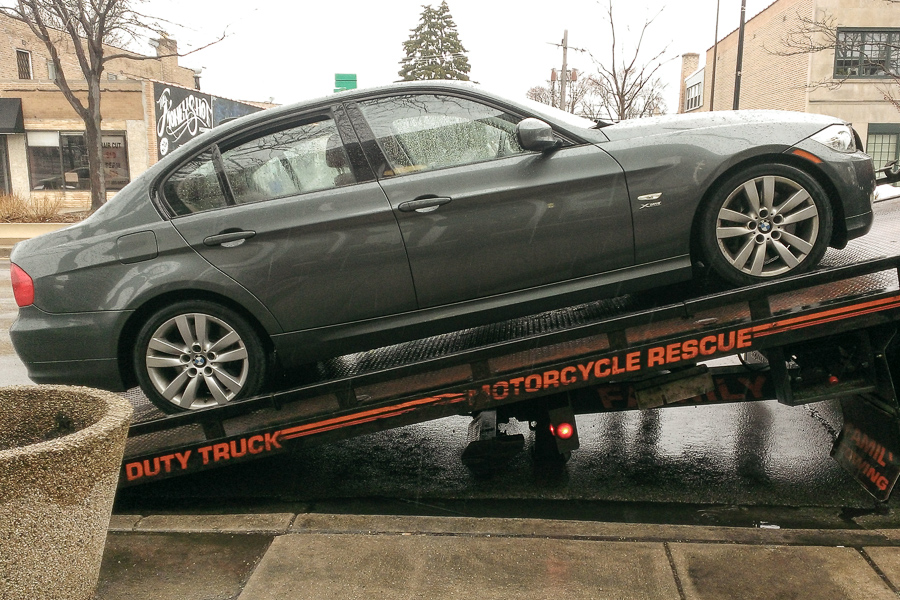
The 9 km tow to my house was $150. It appears as if the water pump has failed. The car is driveable for short distances, so I hope that Tuesday morning I can get it to the nearest dealer, 2 km away.
I am not happy about this.
Forget the Kennedy Expressway during rush hour; Chicago's railroads are worse:
Come to the west side of Chicago to
find out why a power plant in Michigan is short of coal and a
biodiesel maker in Brewster, Minnesota, can’t get enough grain.
The answer is found near Western Avenue, where rail cars
from Archer-Daniels-Midland Co. (ADM), the largest U.S. publicly
traded ethanol producer, rest idle on the track above the Dwight
D. Eisenhower Expressway. A short drive away a burnt orange,
yellow and black locomotive from Warren Buffett’s BNSF railway
sits on an overpass as motor traffic is snarled below.
They can’t move because increasing oil production from
North Dakota’s Bakken field, a record grain crop and
unprecedented cold weather overwhelmed the U.S. railroad system.
In part because of transport delays, coal inventories were down
26 percent in January from a year ago. A quarter of all U.S.
freight rail traffic passes through Chicago, or 37,500 rail cars
each day. The trip through the city can take more than 30 hours.
This has pushed up coal prices and cut coal consumption, which Bloomberg sees as a problem but I'm not so sure actually is. Also, BNSF is spending $5 billion on service upgrades near the oil fields, including adding 500 locomotives, 5,000 rail cars, and 300 crew members.
Via AVWeb, the FAA has announced a proposed rulemaking that would eliminate the 3rd class medical requirement for most small-plane pilots (like me):
The FAA on April 2 announced plans to go through a rulemaking process that could result in expanding the number of pilots eligible to fly without the need for a third-class medical certificate. The announcement comes two years after AOPA and the Experimental Aircraft Association jointly petitioned the FAA to expand the third-class medical exemption to cover more pilots and aircraft.
The rulemaking effort, which the FAA is calling the “Private Pilot Privileges without a Medical Certificate” project, will consider whether to allow private pilots to fly without a third-class medical certificate in certain circumstances. Instead, pilots will be able to use other criteria, including a valid driver’s license, to demonstrate their fitness to fly. The agency offered no other details of the planned rulemaking.
The FAA has announced plans to go through a rulemaking process that could result in thousands more pilots being allowed to fly without a third-class medical.Legislation to expand the medical exemption has been gaining momentum in both the House and Senate. That legislation, known as the General Aviation Pilot Protection Act, would go a step further than the AOPA-EAA petition. Under the General Aviation Pilot Protection Act, pilots who make noncommercial VFR flights in aircraft weighing up to 6,000 pounds with no more than six seats would be exempt from the third-class medical certification process. Pilots would be allowed to carry up to five passengers, fly at altitudes below 14,000 feet msl, and fly no faster than 250 knots. The FAA would be required to report on the safety consequences of the new rule after five years.
That would be great. I haven't had an aviation medical in a while, and it's one of three things keeping me from flying lately. (The other two are time and money.) The medical certification process never seemed particularly onerous, but it is expensive ($200 or so) and time consuming (find an AME, go to the AME, get the exam, go home). I hope the legislation and the rules both pass.
The O'Hare CTA station closed after Monday's train crash, and just re-opened.
I got home with no difficulty and bypassed the dead El train at O'Hare through the simple expedient of taking a taxi.
I'm catching up on work right now, so further comments will issue later. It also turns out, apparently, that a virus had made a beachhead in my nose, so I will have to fight that off before my wit and verve returns.
In totally unrelated news, today is the 30th anniversary of the fictional Breakfast Club.
I'm now at Heathrow where I've got a really great perch overlooking the approach end of runway 9L. A JAL 777 has just floated down to the runway and a BA 747 is taxiing past the window. It's a little piece of aviation heaven in Terminal 5 as I wait for the 787 to Toronto.
As I mentioned earlier, however, my trip home tomorrow morning may end a little differently than usual because of this:
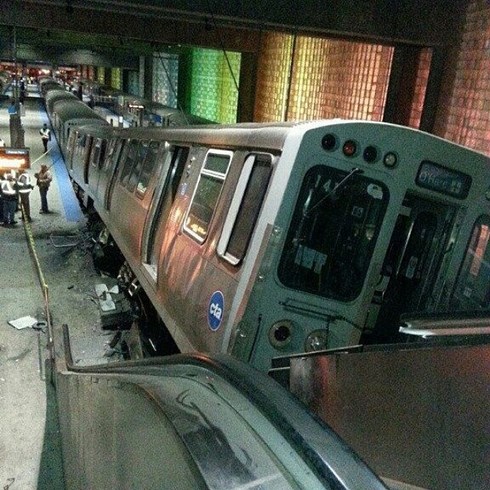
(Photo credit.)
Fortunately, no one was hurt. Unfortunately, the El still missed its flight. Never try to carry too much baggage up the stairs; use the elevator instead.
Boarding starts in a few minutes. Time to boogie. But I'll wait for this BA 777 to land. They're really amazingly graceful when they touch down.
Just checking the local news in Chicago a moment ago I see a weather forecast of -2°C and blowing snow for Tuesday, rain for the rest of the week, and a crash at the O'Hare subway station:
Thirty people were injured after a CTA Blue Line train derailed and hit a platform at O'Hare International Airport about 2:55 a.m. Monday.
The injuries are not life threatening, according to early reports from the scene to Chicago Police Department headquarters, Chicago Police Department News Affairs Officer Ron Gaines said.
It's not clear how fast the train was moving but it jumped a bumper at the end of the line and moved up an escalator, according to Chicago Fire Department Spokesman Larry Langford.
The CTA posted to its Twitter page that trains were stopped at O'Hare but running between the Logan Square and Rosemont stops.
Yeah, I'm in a hurry to get back.
It's 11pm on Sunday and everything is closed, so I'm taking a break from my break. My body still seems to think it's on Chicago time, which will help me rejoin American civilization on Tuesday, though at the moment it means my body thinks it's 6pm and wonders what it will do for the next three and a half hours or so.
I have accomplished what I set out to do this weekend. I visited the British Museum, the Southampton Arms, and another pub a friend recommended, The Phoenix. I've also finished Clean Coder, read Snow Crash cover to cover, and have gotten mostly through High Fidelity. The last book in the list connects Chicago and London—specifically, Camden and Gospel Oak, two neighborhoods I spent time in this weekend—more completely than any other book I can think of.
Tomorrow evening (morning? it's hard to tell) I'm flying out on a 787, about which I will certainly have something to write. I'm quite jazzed about it.
Now, back to Nick Hornby...
I debated this question with someone at a dinner a couple weeks ago. She suggested higher megapixel numbers told you more about the ego of the camera buyer than about the quality of the images.
I said it depends on how you're using the photos, but generally, more data yields more useful photos.
Here's an illustration, using a vaguely-recognizable landmark that I happened to pass earlier this weekend, and just happened to have photographed with three different cameras. All three photos are from approximately the same location at approximately the same time of day. Obviously there are some differences, but the illustration should work regardless.
Let's take a look at three images stored as 600x900 JPEGs and displayed at 500x750, the standard size for this blog. First, let's see one from a Kodak DC4800 in February 2001, 13 years ago. The original size was 1440x2160 at 3MP:
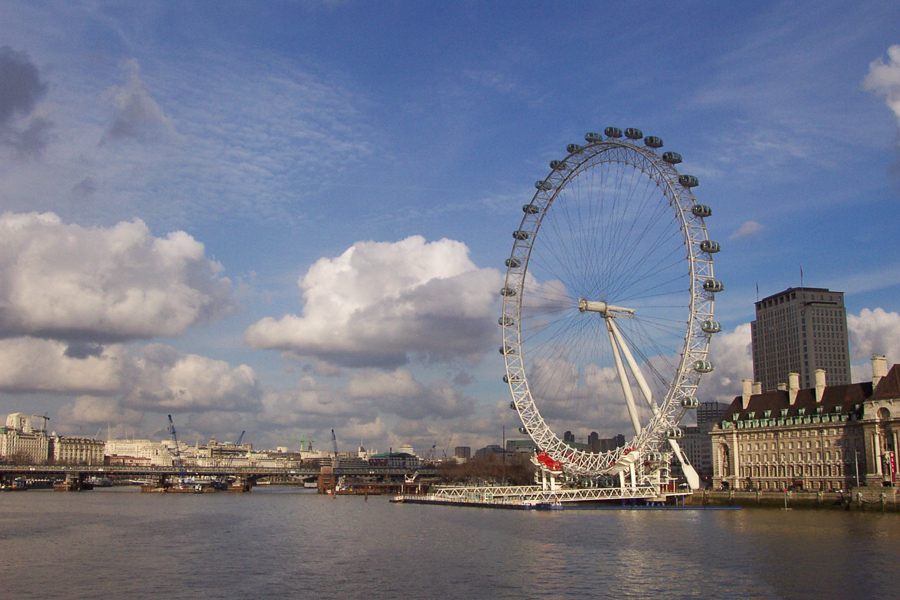
Now skip forward to August 2009, using a Canon 20D shooting a 2336x3648 JPEG at 8 MP:
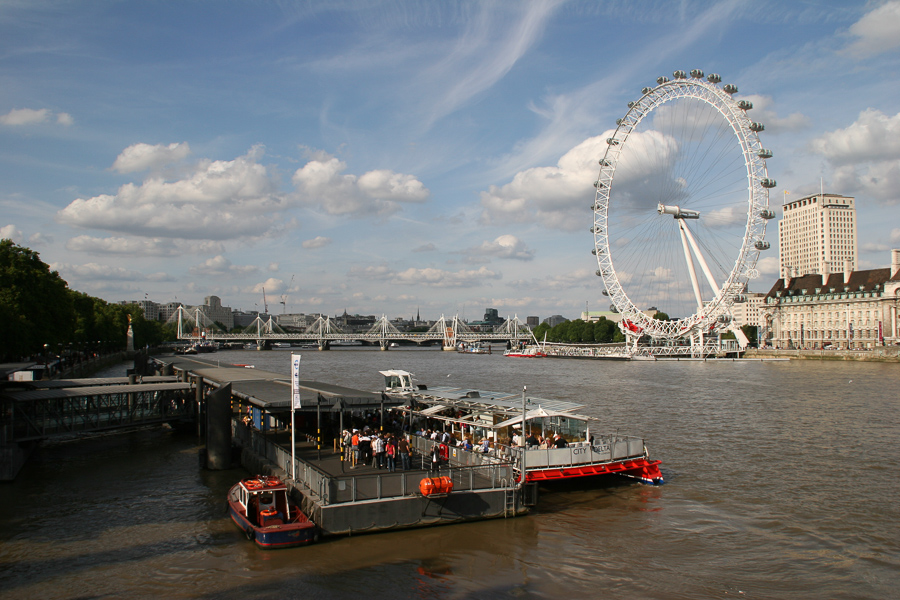
Finally, two days ago, using a Canon 7D shooting raw at 3456x5184 (18 MP):
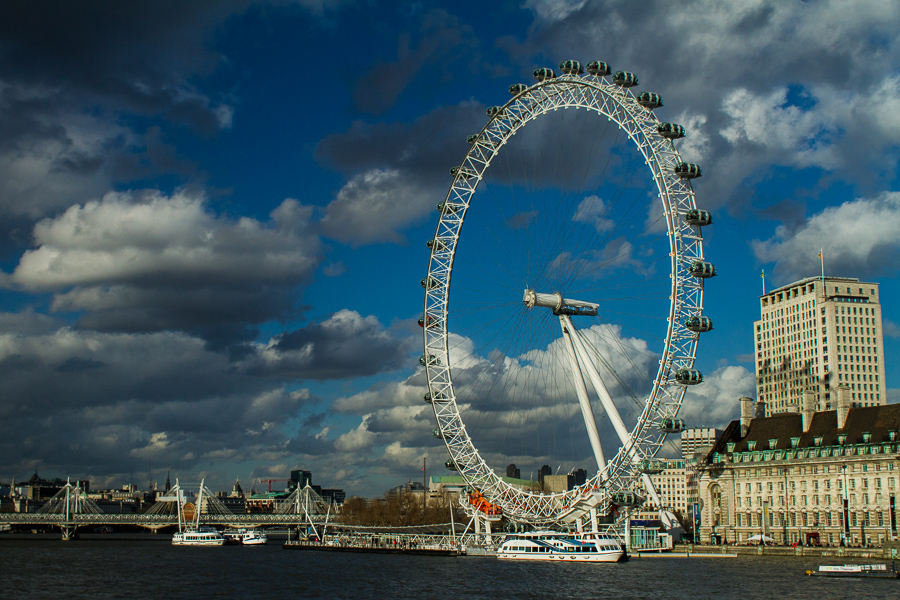
The photos look pretty comparable at this resolution, don't they? So let's zoom in on a 150x150 pixel view of each:
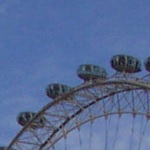
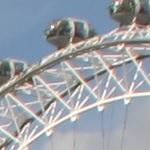
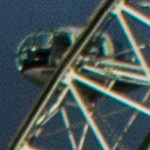
So each one has successively more data than the previous, which becomes obvious when you zoom in.
Another difference: I shot the one from this weekend using the raw format, which preserves all of the information the camera had available at the time of the photo. JPEG images are lossy; they always leave some information out. And because raw images are easier to manipulate using software, I was able to make the third photo a little bit better than I could make the other two.
So are more megapixels more useful? Not if you're just putting up blog posts, but for serious photography, absolutely.